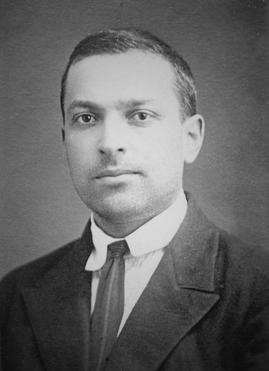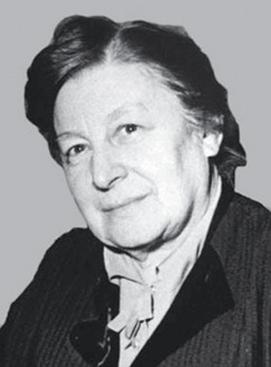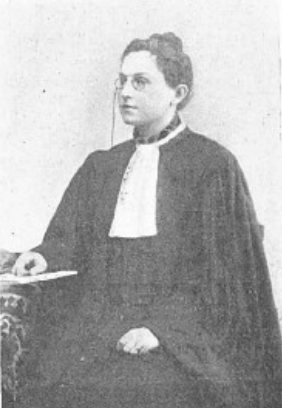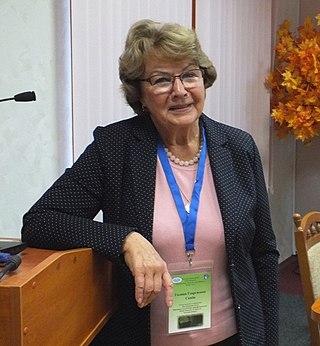
Emil Wilhelm Georg Magnus Kraepelin was a German psychiatrist. H. J. Eysenck's Encyclopedia of Psychology identifies him as the founder of modern scientific psychiatry, psychopharmacology and psychiatric genetics.

Lev Semyonovich Vygotsky was a Russian and Soviet psychologist, best known for his work on psychological development in children and creating the framework known as cultural-historical activity theory.
The following outline is provided as an overview of and topical guide to neuroscience:
In psychology, schizotypy is a theoretical concept that posits a continuum of personality characteristics and experiences, ranging from normal dissociative, imaginative states to extreme states of mind related to psychosis, especially schizophrenia. The continuum of personality proposed in schizotypy is in contrast to a categorical view of psychosis, wherein psychosis is considered a particular state of mind, which the person either has or does not have.

Hervey Milton Cleckley was an American psychiatrist and pioneer in the field of psychopathy. His book, The Mask of Sanity, originally published in 1941 and revised in new editions until the 1980s, provided the most influential clinical description of psychopathy in the twentieth century. The term "mask of sanity" derived from Cleckley's belief that a psychopath can appear normal and even engaging, but that the "mask" conceals a mental disorder. By the time of his death, Cleckley was better remembered for a vivid case study of a female patient, published as a book in 1956 and turned into a movie, The Three Faces of Eve, in 1957. His report of the case (re)popularized in America the controversial diagnosis of multiple personality disorder. The concept of psychopathy continues to be influential through forming parts of the diagnosis of antisocial personality disorder, the Psychopathy Checklist, and public perception.
Pathological lying, also known as mythomania and pseudologia fantastica, is a chronic behavior characterized by the habitual or compulsive tendency to lie. It involves a pervasive pattern of intentionally making false statements with the aim of deceiving others, sometimes without a clear or apparent reason. Individuals who engage in pathological lying often claim to be unaware of the motivations behind their lies.

Paul Everett Meehl was an American clinical psychologist, Hathaway and Regents' Professor of Psychology at the University of Minnesota, and past president of the American Psychological Association. A Review of General Psychology survey, published in 2002, ranked Meehl as the 74th most cited psychologist of the 20th century, in a tie with Eleanor J. Gibson. Throughout his nearly 60-year career, Meehl made seminal contributions to psychology, including empirical studies and theoretical accounts of construct validity, schizophrenia etiology, psychological assessment, behavioral prediction, and philosophy of science.

Bluma Zeigarnik was a Soviet psychologist of Lithuanian origin, a member of the Berlin School of experimental psychology and the so-called Vygotsky Circle. She contributed to the establishment of experimental psychopathology as a separate discipline in the Soviet Union in the post-World War II period.
Malignant narcissism is a psychological syndrome comprising an extreme mix of narcissism, antisocial behavior, aggression, and sadism. Grandiose, and always ready to raise hostility levels, the malignant narcissist undermines families and organizations in which they are involved, and dehumanizes the people with whom they associate.
Adamo Mario (Amarro) Fiamberti was the first to perform a transorbital lobotomy in 1937. Fiamberti was later named Director of the Psychiatric Hospital of Varese, when it was opened in 1964.

David Shakow (1901–1981) was an American psychologist. He is perhaps best known for his development of the Scientist-Practitioner Model of graduate training for clinical psychologists, adopted by the American Psychological Association in 1949.

The Mask of Sanity: An Attempt to Clarify Some Issues About the So-Called Psychopathic Personality is a book written by American psychiatrist Hervey M. Cleckley, first published in 1941, describing Cleckley's clinical interviews with patients in a locked institution. The text is considered to be a seminal work and the most influential clinical description of psychopathy in the twentieth century. The basic elements of psychopathy outlined by Cleckley are still relevant today. The title refers to the normal "mask" that conceals the mental disorder of the psychopathic person in Cleckley's conceptualization.
Some of the research that is conducted in the field of psychology is more "fundamental" than the research conducted in the applied psychological disciplines, and does not necessarily have a direct application. The subdisciplines within psychology that can be thought to reflect a basic-science orientation include biological psychology, cognitive psychology, neuropsychology, and so on. Research in these subdisciplines is characterized by methodological rigor. The concern of psychology as a basic science is in understanding the laws and processes that underlie behavior, cognition, and emotion. Psychology as a basic science provides a foundation for applied psychology. Applied psychology, by contrast, involves the application of psychological principles and theories yielded up by the basic psychological sciences; these applications are aimed at overcoming problems or promoting well-being in areas such as mental and physical health and education.

Bukovinian State Medical University is one of the largest institutions of higher education in the city of Chernivtsi, Ukraine. It is a modern multidisciplinary institution of higher medical education, included in the general register of the World Health Organization, the Great Charter of Universities, the European University Association, which trains applicants for higher education according to a step-by-step system of education
May Smith OBE was a British Industrial psychologist from Hulme, Manchester. She received a bachelor's degree in 1903 and later received a Doctor of Science degree in 1930. Throughout her career, she taught at colleges as well as performing important research in the field of industrial psychology. She subjected herself to her own trials in her research on fatigue. She worked alongside other researchers to find the effects of alcohol and opium on efficiency as well as research on telegraphist's cramp. She was an investigator at the Industrial Health Research Board from 1920 to 1944. She held several positions on the executive of the British Psychological Society.

Elmer Ernest Southard was an American neuropsychiatrist, neuropathologist, professor and author. Born in Boston, Massachusetts, Southard lived in the city for nearly his entire life. He attended Boston Latin School and completed his education at Harvard University. At Harvard, Southard distinguished himself as a chess player. After briefly studying in Germany, he returned to the United States as a pathologist at Danvers State Hospital. Southard held academic appointments at Harvard University and its medical school.
Activity-specific approach in temperament research is the theory related to a structure of temperament, i.e. how temperament traits can be classified and organized. This approach suggests:

Grunya Yefimovna Sukhareva was a Soviet child psychiatrist.

Józefa Joteyko was a Polish physiologist, psychologist, pedagogue, and researcher. After completing her undergraduate studies at the University of Geneva, she entered medical school at the Free University of Brussels and completed her Doctor of Medicine in 1896 at the University of Paris. She opened a medical practice in France but decided two years later that she preferred research and moved back to Brussels. Operating as an assistant at the Solvay Institute of Physiology, she lectured and conducted research into muscle and nervous system fatigue.

Galyna Grygorivna Skibo - Ukrainian scientist, doctor of medical sciences, professor, corresponding member of the National Academy of Sciences of Ukraine (2018), laureate of the awards of the National Academy of Sciences of Ukraine named after O.O. Bogomolets (1996) and P.G. Kostiuk (2019), winner of the State Prize of Ukraine in the field of science and technology (2013), Honored Worker of Science and Technology of Ukraine (2006), head of the Cytology department of the Bogomoletz Institute of Physiology NAS of Ukraine, professor of NSC "Institute of Biology and Medicine" of Taras Shevchenko National University of Kyiv.











